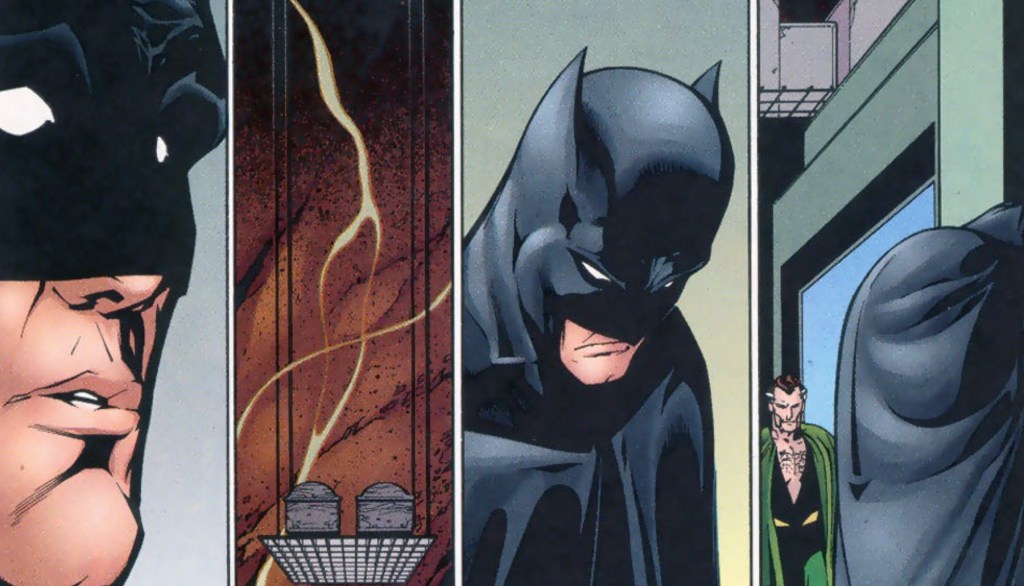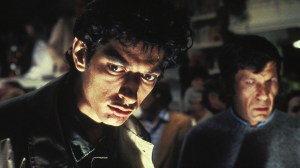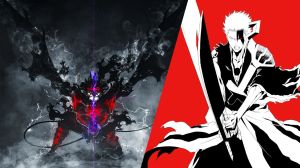Although Batman is not known for his trustfulness, he has always seemed to place whatever trust he has in those with whom he has built long-term relationships: people who have shed blood, sweat, and tears alongside him in the fight for a better, more just future. If there was a group of people who could earn a spot on Batman’s “trust list,” it was the Justice League — or at least its core members. However, as shown in the JLA “Tower of Babel” storyline, even the Justice League wasn’t immune to Batman’s deep-seated paranoia. His actions in the story not only fractured his relationships with his teammates but also sparked widespread backlash from the fanbase, making the arc one of the most criticized in the Batman franchise.
Videos by ComicBook.com
In Mark Waid, Howard Porter, and Steve Scott’s Justice “Tower of Babel” story arc, published in JLA #43-46, Batman develops contingency plans to neutralize his Justice League teammates should they ever go rogue. Batman’s breach of his teammates’ trust is severely compounded when Ra’s al Ghul acquires these “contingency plans” and deploys them to dismantle the Justice League, his most formidable opponents.
The Tower of Babel: Can the Dark Knight Get Any Darker?

Naturally, Batman’s choices in “Tower of Babel” sparked considerable debate within the fandom, much of it critical. Many fans argued that his contingency plans were far too impractical, especially for someone with Batman’s level of intelligence and experience. Others, however, contended that these plans secretly cemented his status as the ultimate hero of the DC Universe, as he could neutralize fellow heroes whose own supervillains had failed to defeat them for decades. On the other hand, a significant portion of fans believed the storyline portrayed Batman in a negative light. It made him seem like a petty superhero, driven by a raging inferiority complex that amplified his well-known paranoia.
[ RELATED: Is Absolute Batman Too Violent? ]
Despite these issues, however, there’s an even stronger argument that the “Tower of Babel” arc should be considered one of the franchise’s best because of its excellent dissection of the man in the cowl. Indeed, while Batman’s history of interpersonal issues – like mistrust – has been widely chronicled, nothing illustrates or explains it quite as clearly as the “Tower of Babel” arc. To be sure, the members of the Justice League are not menaces to society. On the contrary, they are Earth’s mightiest heroes who knowingly and voluntarily put their lives on the line to ensure the peace and security of humanity. But even with a bar that high, Batman is still distrustful enough of their motives and their heroism to implement a “backdoor attack” action plan – “just in case” something goes sideways. Indeed, if you ever doubted how neurotic Batman is, “Tower of Babel” should fully put that to rest.
Tower of Babel is a Deep Dive Into Batman’s Essential Persona

Beyond highlighting Batman’s psychological complexities, “Tower of Babel” reinforces that calling him the “world’s greatest detective” is no exaggeration. The story showcases just how formidable his investigative skills truly are. While the mistrust that motivates his plan may be questionable, there’s no denying that once he put it into motion, he succeeded on every level. His actions not only affirmed his unmatched detective abilities but also demonstrated his strategic brilliance. Identifying the Justice League’s vulnerabilities was only half the battle — what’s even more impressive is how he devised precise, effective methods to exploit those weaknesses and neutralize each hero. Indeed. Lex Luthor has nothing on the brain power of the Caped Crusader.
The “Tower of Babel” storyline also introduces a crucial element of realism into the narrative, thereby making the story more compelling. Specifically, this arc highlights issues common in real-world organizations, demonstrating how a lack of trust, particularly in a profession where it is necessary, can poison relationships, rendering a team ineffective and vulnerable. This is especially damaging to the JLA because Batman had, until that point, earned the complete trust of his fellow members. To them, his actions constituted an absolute betrayal, a feeling made even more acute by Batman’s apparent inability to genuinely care about the other members’ feelings.
The “Tower of Babel” Shadow Stretches Across the DC Comics Universe

The practical effect of this is that while the team should be focusing on Ra’s al Ghul, they are more concerned with the harm Batman has done to them. As Wonder Woman suggests, if a superhero team can’t trust each other, what good are they?” This is an important point, especially considering the heavy emphasis on superheroes teaming up in the DC Universe, whether in crossover events or within the primary reality. The “Tower of Babel” raises an interesting question: How effective can heroes be if they hide their identities from one another or, more importantly, if they don’t believe their teammates “have their backs”?
The “Tower of Babel” arc’s genius lies in how it asks fundamental questions about the relationships within the JLA, completely altering the dynamic of how superheroes work together. This is important because it is not just exclusive to the JLA, but rather speaks to the broader issue of superhero relationships across the DC Comics Universe. As demonstrated by Ra’s al Ghul, it is an issue that supervillains everywhere are hoping superheroes will never resolve.








